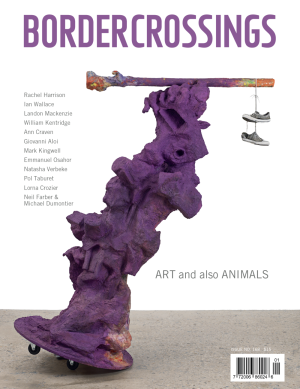Projections
In these post-conceptual times, there is a surfeit of content: narratives, histories and psyches have rushed into the vacuum created by formal experiments conducted across a range of media in the not so recent past. The essential focus of the 1960s and ’70s has led to the polymorphous perversity of the present, and works in-between tend to lean to one side or the other, depending on their individual predilections. While the former is often dry to the point of exercise, the latter risks appearing historically (and artistically) naïve by failing to take into account the preceding investigations into the means of the work’s own reproduction.
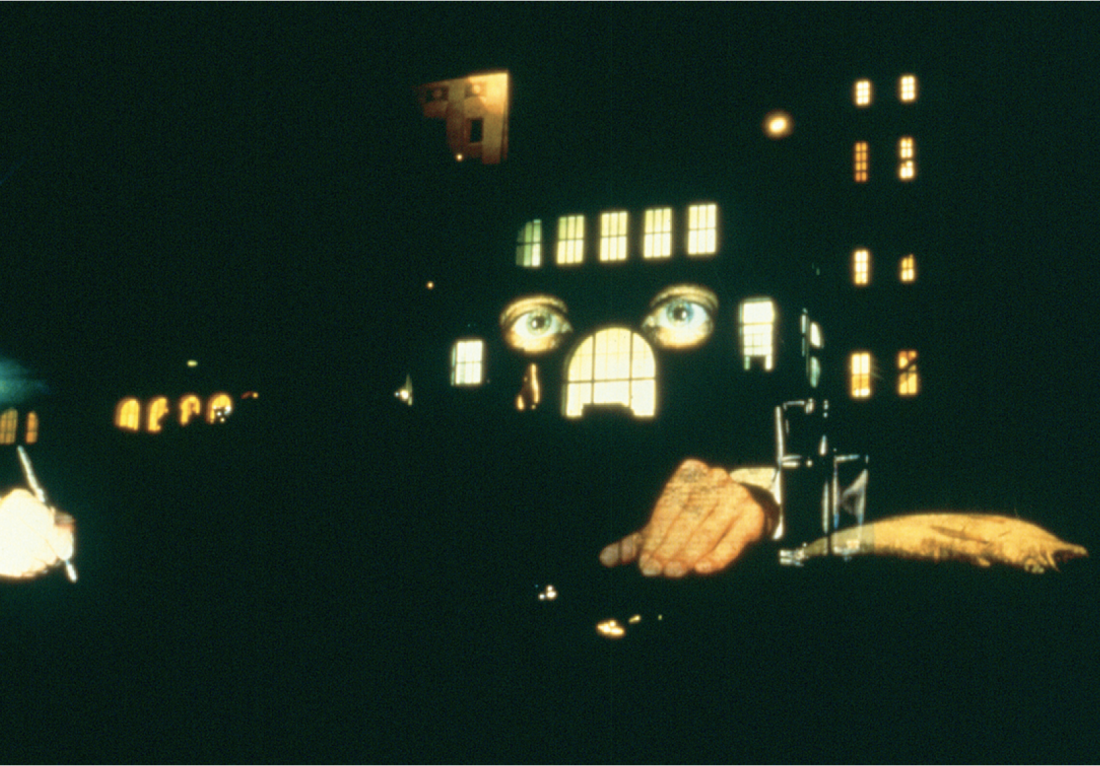
Krzysztof Wodiczko, photographs, on loan from Krzysztof Wodiczko and Galerie Lelong.
An exhibition like “Projections,” a survey of projected imagery in Canadian practice from 1964 to the present, makes these weaknesses explicit by hanging early experiments alongside the current crop of video and installation art. Curated by Barbara Fischer and spread out over four of the University of Toronto’s gallery spaces (including the Justina M. Barnicke Gallery where Fischer currently serves as director), “Projections” is programmed according to a formal definition—the “how,” rather than the “what,” of the work. It is an exhibition about images projected with light (and their accompanying environments). The psychiatric notion of projection, or projection as a metaphor for how an artwork imparts a certain sensation, or projection as a means of imagining a possible future, are only supplementary themes. The journey from self-reflective media (be it photographic slides, film or video) to intertextual narrative can be traced through the early works by the usual suspects at the University of Toronto Art Centre.
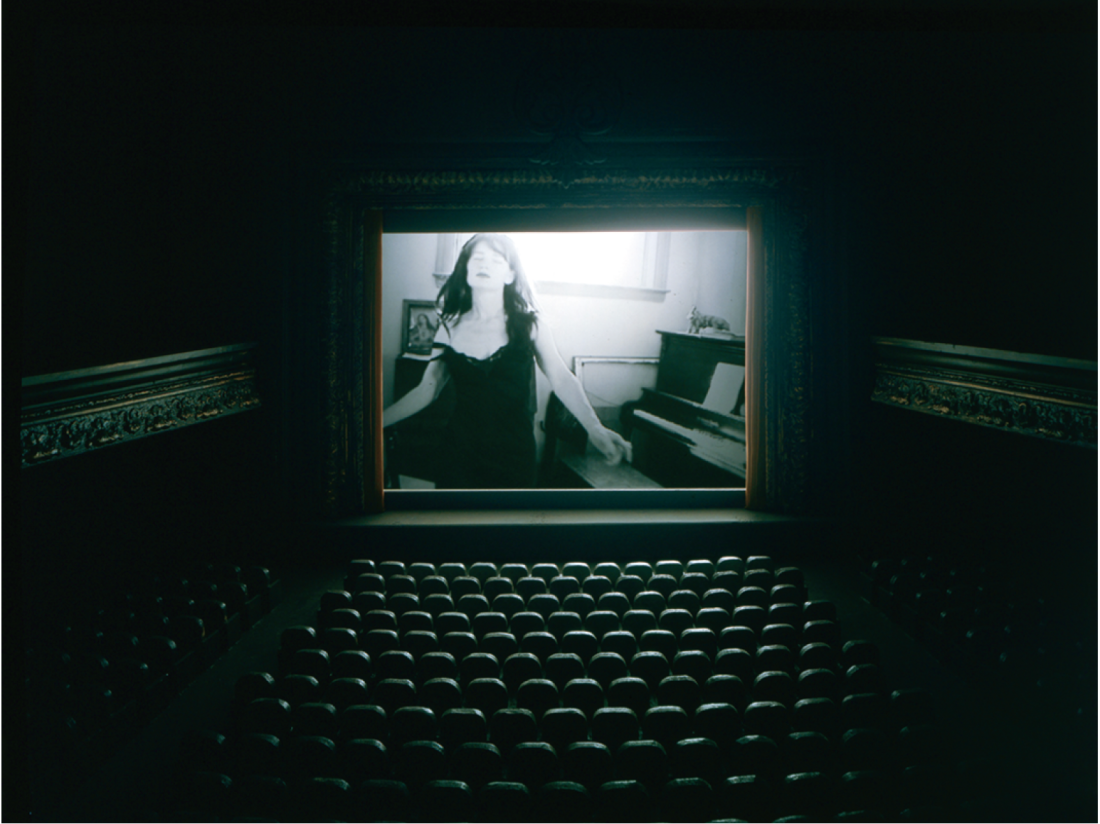
Cardiff /Miller, The Muriel Lake Incident, 1999, multimedia construction with video projection and binaural audio, Galerie Barbara Weiss, Luhring Augustine Gallery and the artists.
Ian Carr-Harris’s Empire Piece confronts us right off the bat, its imposing architecture reinforcing both structurally and ideologically a single slide projection. Michael Snow appears in his split (front and back)-screen film, Two Sides to Every Story, exploring the camera as a constructed perspective (Stan Douglas’s similarly split-screen Le Détroit would have been an excellent complement but it is unfortunately not included). David Askevold and Murray Favro, both in their own way, play with the surface on which images are projected, revealing illusionistic space while at the same time exploiting it. These, the oldest and most formally rigorous works on display, serve as the rhetorical core of the exhibition: they consider a range of projection processes with only a modicum of content.
Younger artists who focus on the “purer” (for lack of a better word) aspect of projection—simply playing with light—are largely left out. Kelly Mark is the one exception, but her contribution, Commercial Space, is a clumsier replay of previous attempts to tame the flickering light of a television screen. It does succeed, however, in creating a sculptural, rather than merely visual, space; reminding us we’re in a gallery, rather than tricking us into believing we’re in a theatre.
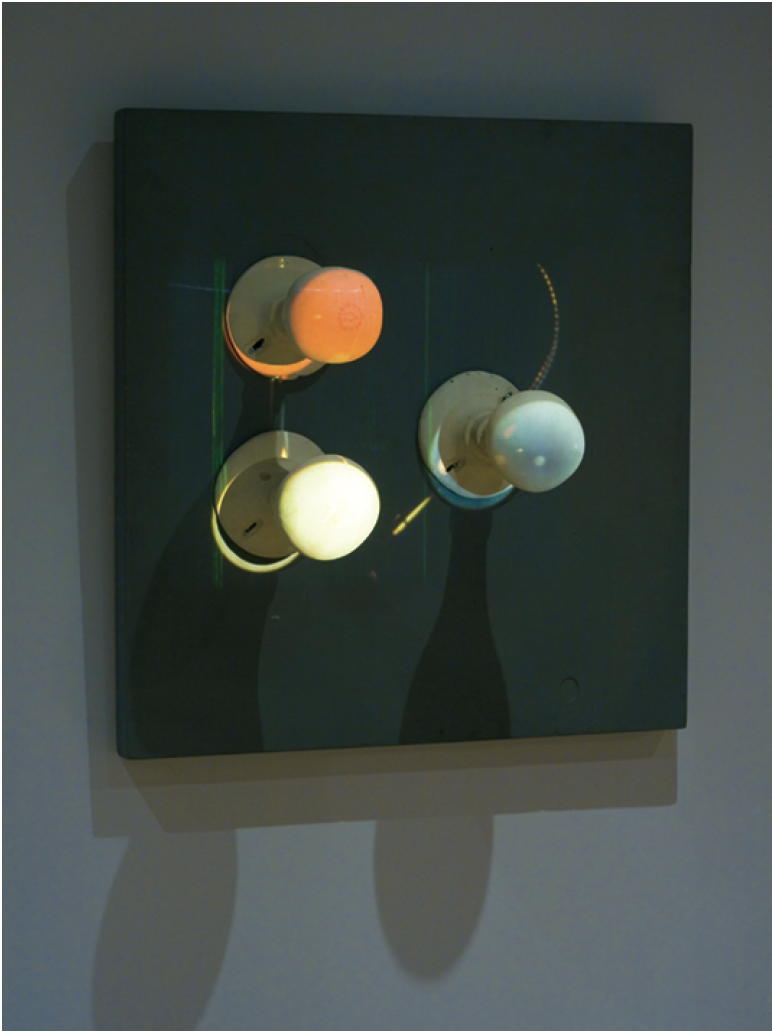
Murray Favro, Light Bulbs, 1970, 16 mm fi lm loop, projector, timer control and painted wood, 86 x 91 x 28 cm. Photo: Toni Hafkenscheid.
The majority of the students of Snow, Carr-Harris and their ilk have lost interest in exploring the variety of form and instead succumb to the appeal of the moving image. Fischer writes, “cinema haunts the exhibition,” and she has clearly made her choices in favour of this particular spectre. Janet Cardiff and George Bures Miller’s The Muriel Lake Incident is the run-up to The Paradise Institute, their love-letter to going to the movies. Nathalie Melikian pens her own paean to the science fiction flick, listing alphabetically all the elements of the genre she has observed in her obsessive viewing—accompanied by a medley of essential soundtracks. Mark Lewis ostensibly documents the architecture of a London housing complex but his video is mostly a tribute to the dolly shot. And Nestor Kruger creates a film in virtual space, foregoing cameras for his computer, just as Hollywood filmmakers are increasingly apt to do.
Straddling the exhibition’s two major sub-themes (one on illuminated images and the other on moving images), the most interesting works could fall into either category. Robert Wiens’s movie theatre/maquette/light box wrestles the maximalism of the silver screen into a minimalist well of darkness and light. Rodney Graham’s Coruscating Cinnamon Granules layers the history of the universe (which is the history of light) over the history of film (his 16 mm looping mechanism in full view) over the history of his kitchen. And David Hoffos physically projects moving images into the gallery, as if he converted a fragment of film into an enveloping installation, with the sloppy sleight of hand of a diffident magician who knows, and we know he knows we know, that such an illusion is a matter of faith.
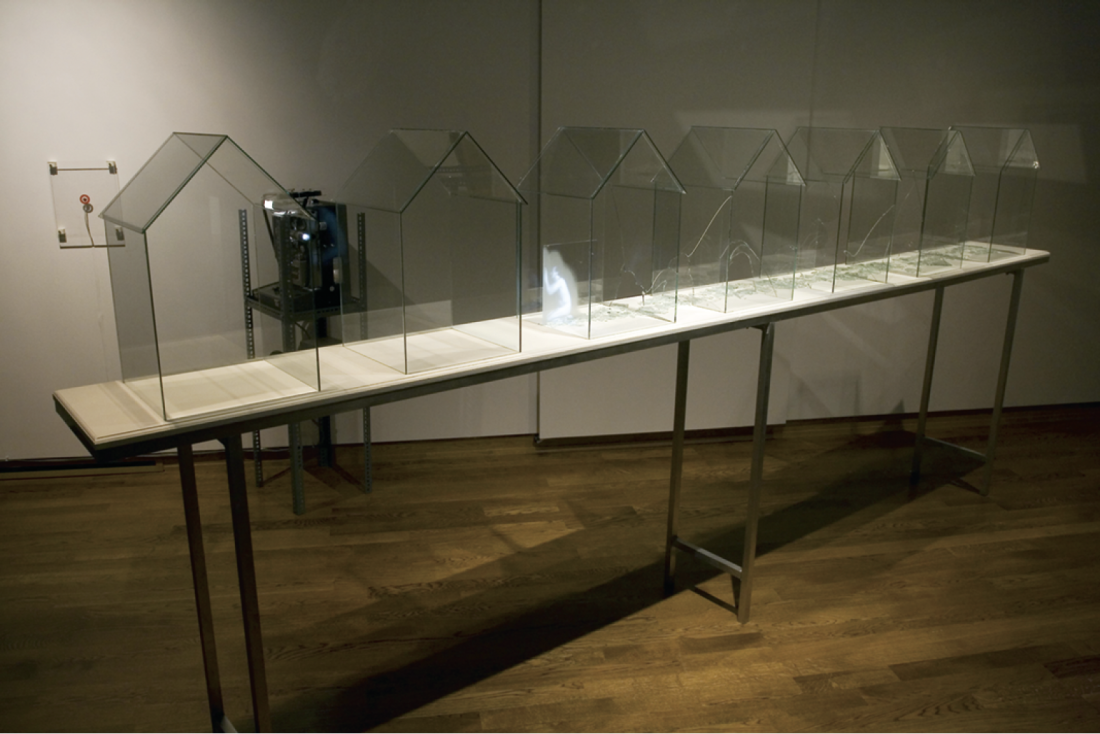
Wyn Geleynse, An Imaginary Situation with Truthful Behaviour, 1988, 16 mm projector, 16 mm fi lm loop, cassette, timer, projector stand, 9, 12 x 12 x 19” glass houses, stands, ground glass. Photo: Toni Hafkenscheid.
These latter works make explicit (in a soft-core way) their own mechanics, yet fold that understanding into a quasi-transcendent experience: we want to go there, we know how to get there, we spend some time there, but we can’t stay, we always return. This spread—from the present to the potential, from the essential here to the metaphoric there, from my eye to the image—is the ur-projection of art, the line that connects what is real to what is imagined. It’s an ungainly concept, so all-encompassing, and the effort to contain it is doomed never to be complete, but attempts—another kind of projection—are always appreciated. ■
“Projections” exhibited at Doris McCarthy Gallery, Blackwood Gallery, Justina M. Barnicke Gallery, and University of Toronto Art Centre, from April 8 to June 17, 2007.
Terence Dick is a writer living in Toronto.

